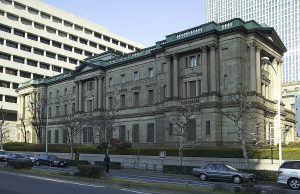TOKYO – The Bank of Japan (BOJ) maintained ultra-low interest rates on Friday and held off making changes to its controversial bond yield control policy, leaving options open ahead of a leadership transition in April.
The meeting was the last one to be chaired by Governor Haruhiko Kuroda, who leaves behind a mixed legacy with his massive stimulus praised for pulling the economy out of deflation – but straining bank profits and distorting market function with prolonged low interest rates.
Many investors expect the central bank to phase out yield curve control (YCC) when Kuroda’s successor, Kazuo Ueda, takes the helm in April.
“Ueda won’t abruptly move and probably wait until his second meeting in June, in changing forward guidance and YCC,” said Masamichi Adachi, senior Japan economist at UBS Securities.
“The BOJ will likely abandon its 10-year bond yield target, while maintaining negative interest rates, to arrest distortions in the yield curve,” he said.
As widely expected, the BOJ maintained its short-term interest rate target at -0.1% and that for the 10-year bond yield around 0% at its two-day meeting that ended on Friday.
It also left unchanged a band set around the 10-year yield target that allows the yield to rise up to 0.5%.
“The BOJ expects short- and long-term policy interest rates to remain at their present or lower levels,” the BOJ said in a statement announcing the decision, keeping intact its dovish guidance on the future policy path.
The yen JPY=EBS was last down about 0.15% at 136.36 against the dollar, trimming losses after a knee-jerk plunge of as much as 0.62% as some investors unwound bets made on expectations of a policy tweak.
The 10-year Japanese government bond (JGB) yield JP10YTN=JBTC fell to 0.445% after the decision, the lowest since Jan. 26, having been stuck at the BOJ’s 0.5% ceiling.
The BOJ maintained its view Japan’s economy will likely recover. But it offered a bleaker view than in January on output and exports to say they were “moving sideways” in a nod to recent weaknesses in factory production and overseas demand.
In January, the central bank said output and exports were increasing as a trend.
UEDA UP NEXT
With inflation exceeding its 2% target, the BOJ has been forced to ramp up bond buying to defend the 0.5% cap set for the 10-year bond yield – at the cost of distorting the shape of the yield curve and causing dysfunction in the bond market.
Kuroda has repeatedly said consumer inflation, now running at double the pace of the BOJ’s 2% target, will begin to slow as the effect of past spikes in fuel and raw material prices fades.
Data released on Friday showed Japan’s wholesale prices rose 8.2% in February from a year earlier to mark the second straight month of year-on-year slowdown, heightening the chance the rise in consumer inflation will start to moderate in coming months.
In parliament hearings last month, Ueda echoed Kuroda’s calls to keep ultra-loose policy. But the incoming governor said he had ideas on how to exit low rates, and was open to the idea of re-assessing the current policy framework.
“Under Ueda, the BOJ will shift to a phase where it sees the need to keep big stimulus, but not necessarily ‘extraordinary’ monetary support,” said Hiroaki Muto, an economist at Sumitomo Life Insurance.
“Having acknowledged the side-effects of YCC, Ueda will probably tweak or abandon the policy around June,” he said.
The upper house of parliament on Friday approved the government’s appointment of Ueda and his two new deputies, Shinichi Uchida and Ryozo Himino, finalising the confirmation of the new BOJ leadership.
Ueda will chair his first policy meeting on April 27-28, when the board will produce closely watched, fresh quarterly growth and price forecasts extending through fiscal 2025. — Reuters

